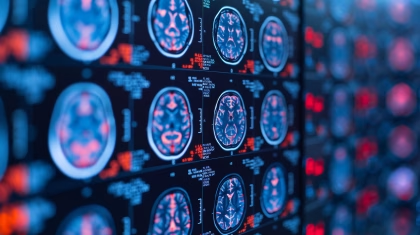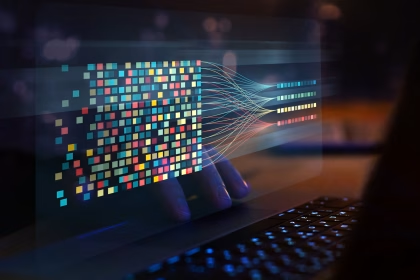The Past, Present, and Future of EEG Research
The use of electroencephalography (EEG) is a central part of current investigations into the human brain, and has been in use for over 80 years. As a method for recording brain function, it remains one of the few methods that is directly tied to neuronal activity.
When neurons fire, or send a signal to each other, they produce an electrical current – when enough of these electrical currents are produced at once an electrode can detect them, and we can start to explore how the brain is working. To see how contemporary research has been shaped by this tool, it can be helpful to look at its past. In this article we will be exploring the foundation and invention of EEG, how it has been used over the years, and what it is being used for today.
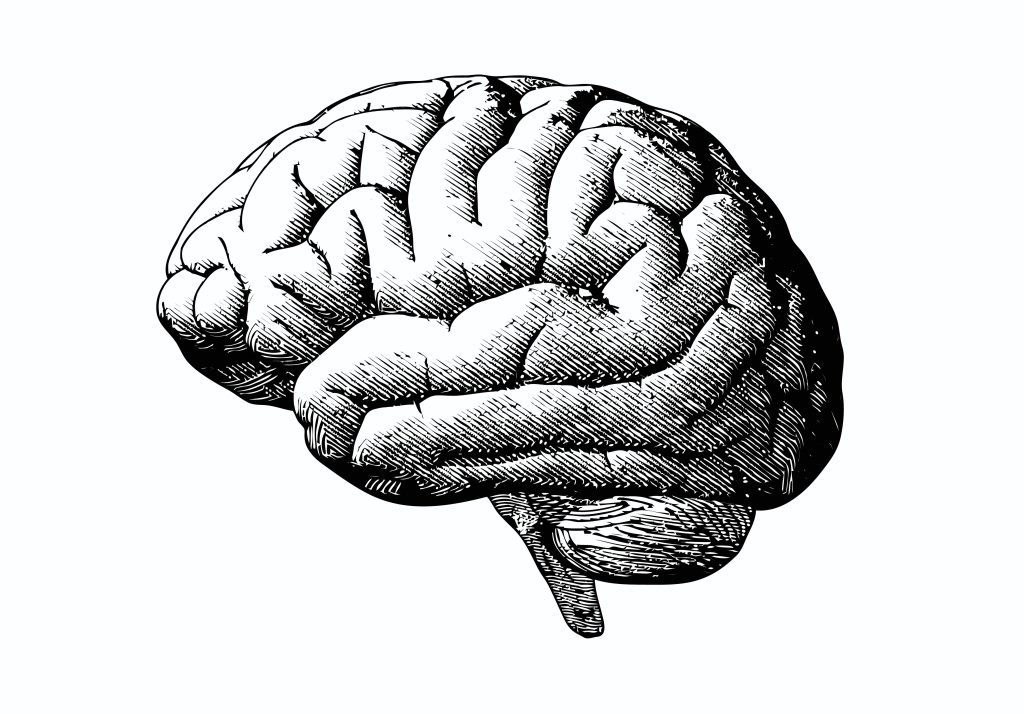
The history of EEG has not been a straight and narrow path. A few wrong turns have been travelled along, from the grisly and weird, to the merely misunderstood. The research being carried out today is far more advanced, yet can still be traced directly from its origins.
In the beginning…
Our journey could begin with Luigi Galvani (1737-1798), the eminent scientist who amongst many of his achievements and discoveries showed that electrical impulses could twitch and flex a frog’s hindquarters. The electronic current would excite the nerve fibers and cause muscle contractions. This of course ensured a macabre lesson in science classes for years to come. Most importantly however, Galvani was the first to show that electricity was a force that could control our bodies. This was a pivotal moment for biological science, and underpins our understanding of neuroscience today.

With less scientific spirit but the same principles in action, Galvani’s nephew, Giovanni Aldini (1762-1834) used the combination of electricity and the corpse of a recently deceased criminal to display a morbid street attraction, recreating the classic frog experiment on a human-scale, with inhumane results.
It is perhaps unsurprising to say that this drew crowds and complaints in equal measure, but thankfully more scientific endeavours were soon to be embarked upon with the lessons of Galvani. It took the insight of Emil du Bois-Raymond (1818-1896) and his knowledge of the nature of electrical properties within human cells. Bois-Raymond pioneered our understanding of the fundamental mechanisms of action potentials – the way in which a neuron fires, or signals to another. This is the way our brain communicates. Bois-Raymond therefore showed us that not only are our bodies electric, but our brains are too.
It was through the work of these pioneering scientists (and many more unmentioned people – see Volta, Ohm, and Faraday, to name just a few) that the stage was set for Richard Catton, who began electrical recordings of the brain – similar to the EEG experiments we know of today. By attaching electrodes to the hemispheres of the brain (albeit the brain of a rabbit and of a monkey), he showed that the electrical current could change depending on behavior. The findings took up less than a quarter of a page in The British Medical Journal, were largely ignored, and forgotten about in his obituary. There is sometimes little prestige in science.
The Father of EEG
It took the mind of Hans Berger (1873-1941), a German psychiatrist with a fondness for the mystical – and a belief in telepathy – to advance the innovation further. In 1929 he published “On the Electroencephalogram of Man” that demonstrated EEG in a form that is almost the same as the technology we know today. The paper set out the workings of EEG in no less than 44 pages, fastidiously documenting the waves of electrical activity that occur across the brain.
These waves – neuronal oscillations – showed how the synchronized orchestra of thousands of neurons firing could generate electrical fields that can be detected, and measured, by EEG. Berger’s equipment was nothing if not crude, but his findings were nothing short of remarkable. This view was shared by many in the scientific world, who ultimately questioned the legitimacy of such an outrageous finding. Over a further 9 years and 14 reports he refuted his critics, and expanded on the ideas of EEG with meticulous detail.

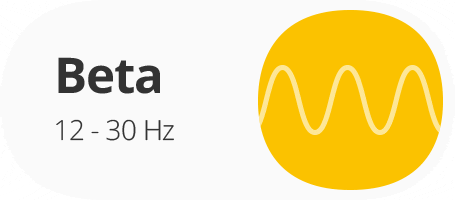
By 1939 scientists were already talking of “alphas” and “betas” to describe the rate of neuronal activity, and discussing applications within epilepsy research. The most common rate for neuronal activity in an awake human, the alpha wave, was originally known as the “Berger rhythm”, a fitting epitaph but one that ultimately didn’t last. As this was 1939, the world was of course largely gripped by the onset of war – this inevitably took its toll on many areas of science, and EEG research was certainly not an exception.
By 1945 however, Walter and Dawson predicted the continual rise of EEG use: “With the return of peaceful conditions the number of centres wishing to install electroencephalographic apparatus is likely to increase…”. It is difficult to make prophecies about the future, but this was one that was proven to be correct.
The next few decades
By the 1950’s, discussions were largely centered around two topics – one of hardware, in which attempts at automation and localization were being debated at length. The other topic was that of drugs. The “pharmacopoeia” of the time was a neat list of complexing agents, mild hypnotics, and antifungals. Dr. Sem-Jacobsen was noted in particular for pushing the boundaries of drug study and EEG recordings, with his administration of mescaline and lysergic acid diethylamide (better known as LSD). This was an era of science rather different to that of today.
A report by the British Medical Journal (that originally published Richard Catton’s brief announcement of successful EEG experiments) in 1966 noted that there were too few EEG services in Britain. Remarking how use of the equipment required the work of both a “recordist” and “a medical man”, we can now at least be glad that the image has changed, and EEG research has never been simpler.
The following decades would see a continual increase in the use of EEG, and with various applications. Researchers have made advances in the study of brain pathology, function, and behavior, all thanks to the ease and insight of EEG recordings. These advances have been particularly prevalent or pertinent
within sleep research and diagnoses of epilepsy, while the high temporal resolution has provided a fitting complement to the high spatial resolution of MRI / fMRI.
There have also been some more esoteric interests investigated, from consciousness and free will, to the first human brain-to-brain interface. The latter is a fitting invention for Hans Berger as the father of EEG, as his belief in telepathy has technically been proven true (although of course with all the mysticism removed).
Where are we at today?
In more recent years, the use of EEG has capitalised on its intrinsic advantages. As an imaging method, it has become relatively cheap and portable, resulting in a wide use with young children and infants. It should come as no surprise that kids can be tricky participants in scientific research, so the flexibility offered has been integral to furthering our understanding of the early developing brain. The ease of combination with other biometric or imaging tools has also enhanced what would previously be standalone findings, helping researchers peer back into the brain and mind ever further.
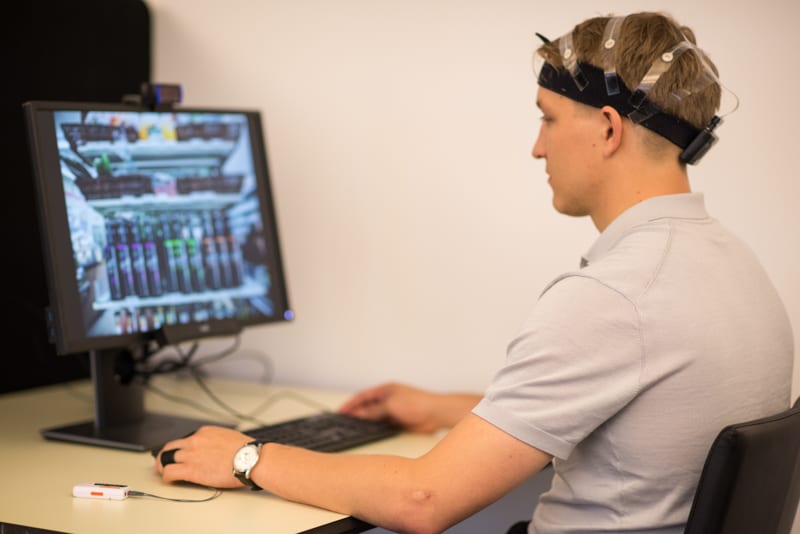
One of the greatest, and simplest, innovations in EEG research has been the move away from analog to digital recordings. Long gone are the days in which electrical impulses were translated into ink onto paper. There are no longer literal scrolls of data, and instead researchers can themselves scroll through the data. The rise of automated and integrated computer-EEG systems has provided both an accessible and adaptable system for research, while new and innovative analytical methods make the most of the output.
iMotions is at the forefront of enhancing research completed with EEG, by simplifying the route to completing EEG experiments, while also providing a flexibility and compatibility with other biometric measurements. As a software solution it provides an all-in-one environment for presenting stimuli, and recording respondent data simultaneously. The rate at which science advances has never been faster, and is increasing all the time – iMotions is designed to be at the forefront, and to continue to lead the way with EEG research and beyond.
We have come a long way from the days of Galvani, and while many questions have been answered, the quest to understand the human brain will still take time. iMotions wants to help answer those questions, and to continue being a part of EEG history, well into the future.
Free 59-page EEG Guide
For Beginners and Intermediates
- Get a thorough understanding of the essentials
- Valuable EEG research insight
- Learn how to take your research to the next level











